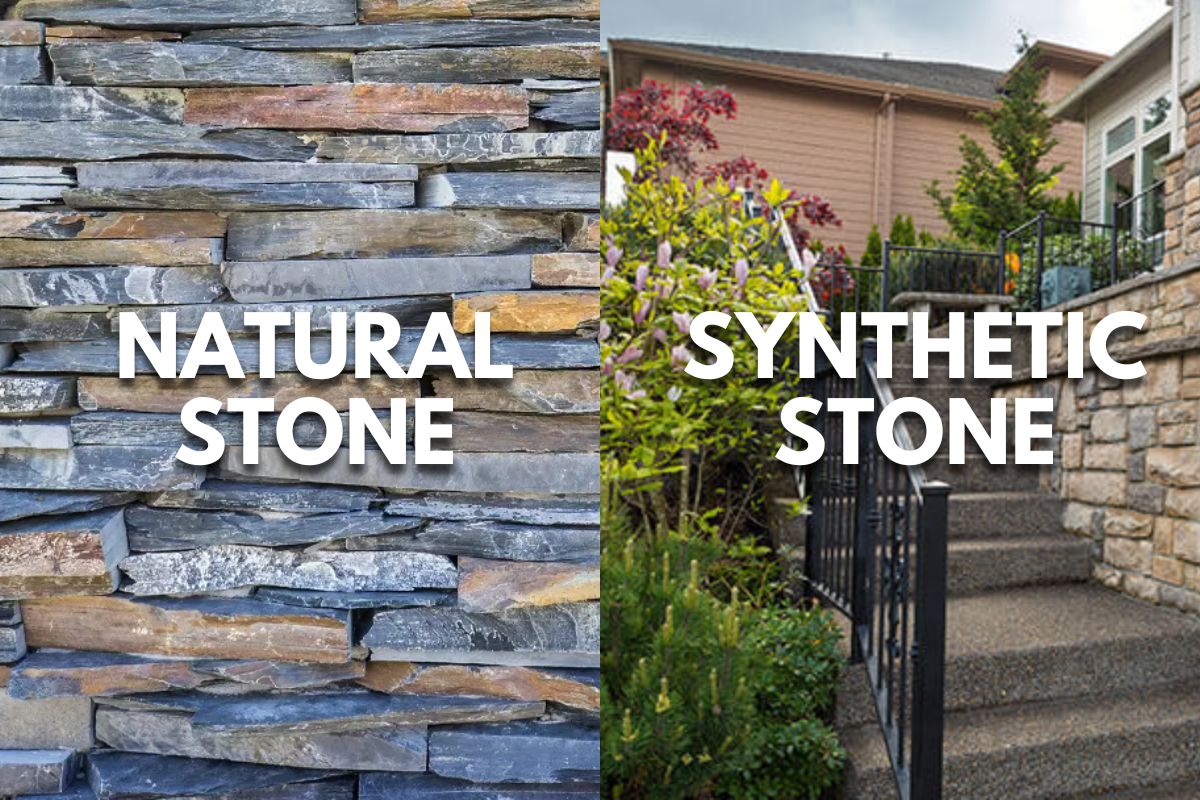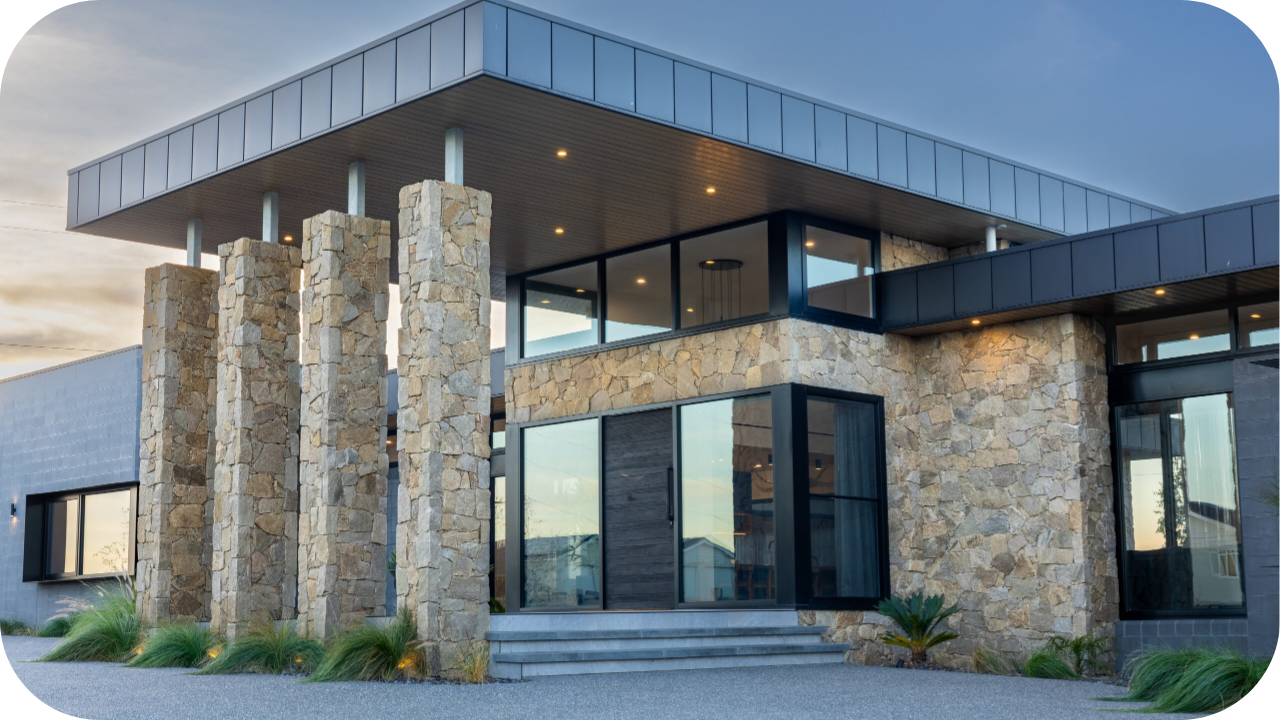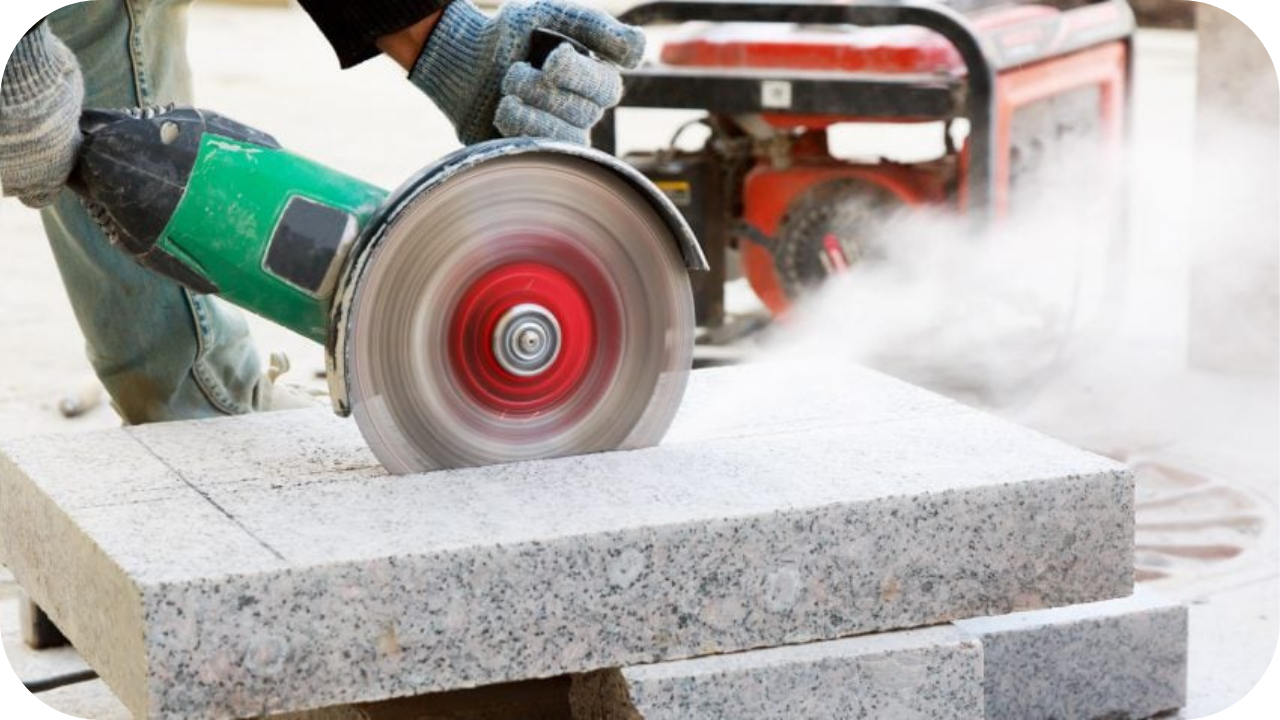
Choosing the suitable material for a home or commercial space can be daunting, with options like natural stone and synthetic materials offering unique benefits and drawbacks.
Natural stone offers timeless beauty but often comes with higher costs and maintenance. Synthetic alternatives offer durability and cost-efficiency, yet they might lack stone’s authentic appeal and value.
This article explores the pros and cons of natural stone versus synthetic materials, helping you make an informed decision tailored to your specific application needs.
Applications of Natural Stone
Natural stone is highly valued for its aesthetic appeal, durability, and unique character, making it a popular choice in various applications. Here are key areas where natural stone is commonly used:
- Flooring: Natural stone like granite, marble, travertine, and slate is ideal for high-traffic areas in homes and commercial buildings due to its durability and resistance to wear. It provides a luxurious finish that can significantly enhance the property’s value.
- Wall Cladding and Facades: Stone’s natural strength and resistance to weather conditions make it suitable for exterior facades, adding elegance and increasing the structural longevity of buildings. It also serves as excellent interior wall cladding, providing a natural, high-end finish.
- Landscaping: Limestone, slate, and sandstone are commonly used outdoors for paving garden paths and retaining walls. Their natural texture and colour blend seamlessly with outdoor environments, enhancing the aesthetic of green spaces.
- Bathrooms: Marble is trendy in bathrooms for floors, walls, and vanity tops. Its ability to withstand moisture and its timeless elegance make it a top choice for luxury bathroom designs.
Natural Stone: Pros and Cons
| Pros | Cons |
| Porousness: Certain stones, like marble and limestone, are porous and susceptible to staining if not properly sealed. | Cost: Natural stone tends to be more expensive than synthetic alternatives regarding initial material cost and installation. |
| Durability: Most natural stones are incredibly durable and resistant to wear, lasting decades or centuries with proper maintenance. | Maintenance: Some stones require regular sealing to prevent stains and damage, adding to the upkeep effort and expense. |
| Property Value: Incorporating natural stone into a property can significantly increase its market value due to its luxury appeal and longevity. | Weight: Stone’s heavy weight can be a limitation, requiring additional structural support in some installations. This can complicate and increase the cost of projects. |
| Eco-Friendliness: Stone is an environmentally friendly natural material that can be recycled and repurposed for other projects. | Porousness: Certain stones like marble and limestone are porous and susceptible to staining if not properly sealed. |
| Heat Resistance: Materials like granite are heat resistant, making them ideal for kitchen environments where hot items are placed directly on surfaces. |
Applications of Synthetic Stone
Synthetic stone, also known as engineered stone, is widely used in various applications due to its versatility, uniformity, and range of designs. Here’s how it is applied in different settings:
- Flooring: Synthetic stone tiles are used in residential and commercial spaces for their durability and ease of maintenance. These tiles can mimic the look of natural stone but offer excellent uniformity in colour and texture, making them ideal for large areas where consistency is critical.
- Wall Panels: For interior design, synthetic stone is often used in wall panels and backsplashes. It is lightweight compared to natural stone, making installation easier and less structurally demanding.
- Outdoor Use: Some synthetic stones are designed to be UV resistant and are used in outdoor settings for patios, facades, and landscaping features. These materials maintain their colour and structural integrity even under varying weather conditions.
- Bath Surrounds: Synthetic stone is commonly used for shower surrounds and tub enclosures in bathrooms due to its water resistance and minimal maintenance requirements.
Synthetic Stone: Pros and Cons
| Pros | Cons |
| Consistency: Synthetic stone offers uniformity in colour and texture, which is beneficial for projects requiring a consistent appearance across large surfaces. | Heat Sensitivity: Unlike natural stones, some synthetic stones can be sensitive to high temperatures, which may cause damage or discolouration. |
| Cost-Effective: Generally, synthetic stone is less expensive than natural stone in terms of material cost and installation due to its easier manufacturability and lighter weight. | Environmental Impact: The production of synthetic stone often involves petrochemicals, which can result in a higher carbon footprint than natural stone. |
| Low Maintenance: Engineered stone is non-porous, which makes it resistant to stains and doesn’t require regular sealing like many natural stones. | Less Value Addition: While functional and attractive, synthetic stone does not enhance property value to the same extent as natural stone due to its perceived lower prestige. |
| Durability: Synthetic materials such as quartz are incredibly durable and resistant to scratches, chips, and cracks, making them ideal for high-traffic areas. | Repair and Longevity: Although durable, synthetic stone is challenging to repair if damaged and may not have the same long-term resilience or ageing quality as natural stone, potentially looking dated as styles change |
| Variety: Available in a wide range of colours and patterns, synthetic stone can be designed to mimic the look of natural stone or offer unique aesthetics not available in nature. |
Considerations for Specific Applications
When choosing between natural and synthetic stone for specific applications, several vital considerations should guide your decision:
- Budget: Natural stone typically incurs a higher initial cost due to quarrying and transportation, while synthetic stone is more budget-friendly and offers cost savings in purchase and installation. Determine your budget constraints to help guide your material choice.
- Usage Area: Synthetic stone offers superior durability and stain resistance for high-traffic areas or surfaces exposed to heavy wear, making it ideal for kitchen surfaces and commercial flooring. Natural stone, while durable, may require more maintenance in such settings.
- Aesthetic Preferences: Natural stone is unmatched in uniqueness and natural beauty. Each piece offers distinct veining and colour variations. Synthetic stone is preferable for projects requiring uniform appearance and colour consistency.
- Maintenance Requirements: Consider the ongoing care both materials require. Natural stone often needs periodic sealing to prevent stains, particularly in wet areas like bathrooms. Synthetic stone generally requires less upkeep, making it a convenient choice for busy households or commercial settings.
- Environmental Impact: Natural stone has a smaller carbon footprint in its raw state but may have higher transport impacts. Synthetic stone, made from natural and artificial materials, often involves more energy-intensive manufacturing processes.
Case Studies and Examples
Case Study 1: The Granite-Clad Lobby of Bank of America Tower, New York
The Bank of America Tower in New York showcases the majestic use of granite to enhance its lobby and public spaces. This project selected granite for its durability and the prestige associated with natural stone.
Despite its higher initial costs and weight, which required additional structural support, the natural granite in the tower’s lobby provides a luxurious, timeless appeal. It has remained well-behaved despite the high traffic of this commercial building.
The choice of granite elevated the building’s aesthetic and contributed to its overall valuation, exemplifying how natural stone can be a worthy investment in commercial properties.
Environmental Impact and Sustainability
Natural and synthetic stone materials’ environmental impact and sustainability are crucial for eco-conscious consumers and industry professionals. Here’s a detailed examination of each:
- Natural Stone: Natural stone is quarried directly from the earth, making it one of the most sustainable materials for raw extraction, as it doesn’t require other materials or chemicals for its production. However, quarrying processes are energy-intensive and can significantly disturb local ecosystems. Moreover, the transportation of natural stone, often sourced from global locations, can contribute to a high carbon footprint due to the material’s heavy weight. On the positive side, natural stone can last for generations, reducing the need for replacement and the waste associated with more transient materials. It is also fully recyclable and can be repurposed without losing quality or requiring extensive processing.
- Synthetic Stone: Synthetic stone, such as quartz and other composites, typically consists of natural minerals combined with resin binders. The production of synthetic stones is energy-intensive, involving the extraction of raw minerals and the manufacturing of resins, which are often derived from petrochemicals. This process emits a considerable amount of carbon dioxide and potentially other pollutants. While synthetic stones are durable and may not require frequent replacement, their non-biodegradable nature poses disposal issues at the end of their life cycle. Unlike natural stone, synthetic options are not easily recyclable, which could contribute to landfill waste.
Both natural and synthetic stones have environmental impacts that are important to weigh, particularly regarding energy consumption, resource extraction, and long-term sustainability.
Conclusion: Making the Choice
When choosing between natural and synthetic stone, consider your project’s specific needs—budget, maintenance, and aesthetic desires—and weigh each option’s environmental impacts and longevity. Ready to decide?
Consult a material specialist like Splendour In Stone to find the best stone solution for your space, ensuring a balance between beauty, functionality, and sustainability.
More To Explore

Can Buffalo Granite Withstand Extreme Weather Conditions?
Australia’s climate demands more from building materials. From scorching summers to coastal salt exposure and frost-prone winters, walls need strength that lasts. Buffalo Granite is

Safety Considerations When Cutting or Drilling Beachport Quartz
Working with Beachport Quartz isn’t just about precision cuts. It also involves serious health and safety concerns that cannot be ignored. This quartz-rich stone contains


